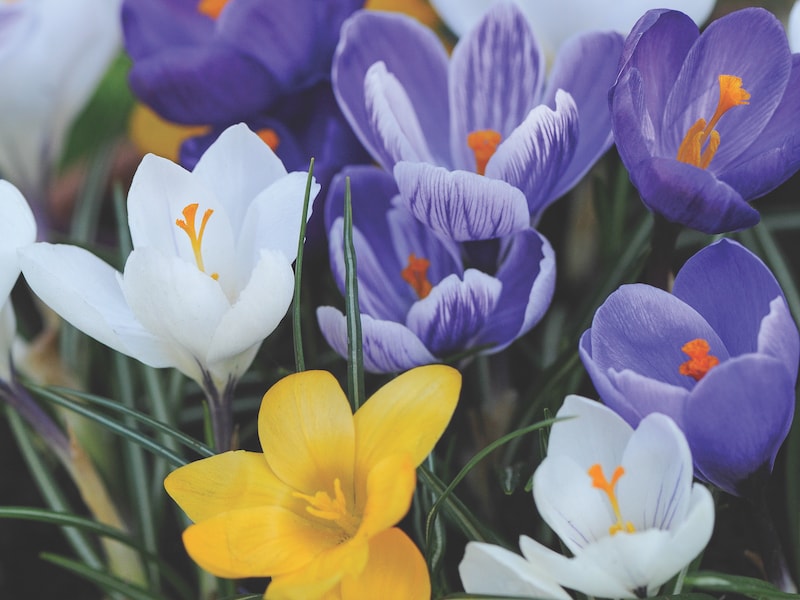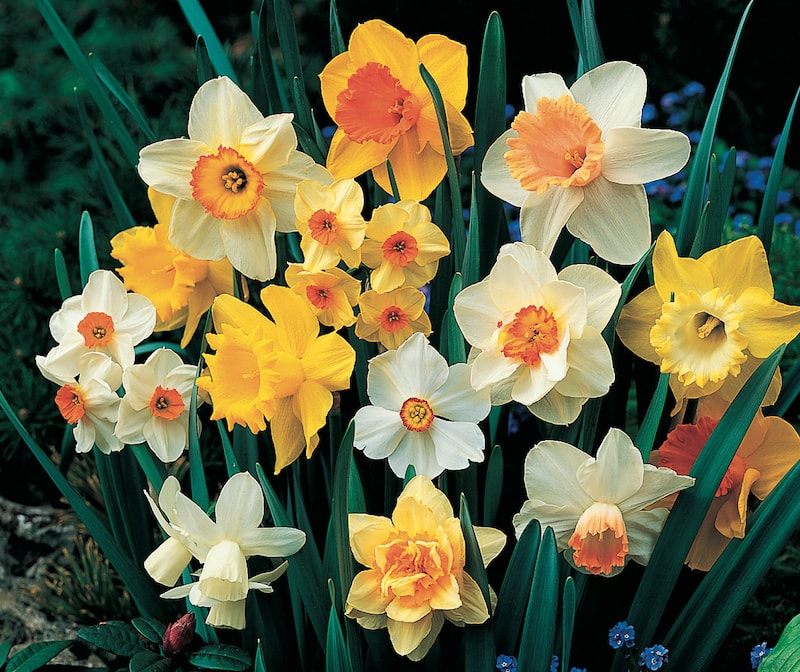When to plant spring bulbs
Nothing says ‘spring is right here’ fairly like the looks of snowdrops, crocus, daffodils and different basic springtime flowers. However to make sure a well timed show, you should get your bulbs within the floor on the proper time. September is the right month to begin planting most spring bulbs, and November for tulips.
Check out our intensive collection of spring bulbs for inspiration.
How to decide on the highest quality spring bulbs
The very best quality bulbs are agency, really feel heavy for his or her measurement and are free from mould and mildew. They shouldn’t be sprouting (although somewhat inexperienced on the neck is okay) or show any energetic root progress.
Shopping for your bulbs in late summer season gives you extra alternative, particularly in the event you’re planning a specific color scheme. If you have already got bulbs saved from final yr, verify them totally and discard any which are comfortable, withered or broken.
The most effective time to plant your spring-flowering bulbs
The most effective time to plant most spring-flowering bulbs is September, though this could differ barely in response to selection. Tulips are the primary exception, and shouldn’t be planted till November.
Most gardeners suggest getting your bulbs within the floor about six weeks earlier than the soil begins to freeze. They then want a time frame within the chilly floor earlier than they flower. You possibly can, after all, plant your spring bulbs later than this, however they may bloom for a shorter time frame of their first spring.
How deep to plant your spring-flowering bulbs

Picture: Crocus ‘Worth Combine’ from Suttons
As a rule of thumb, bulbs ought to be planted at about two-to-three instances the depth of their top, however at all times verify the packet directions to make certain. Merely dig a gap, drop in a bulb and canopy over once more. Should you’re planting up lots, chances are you’ll want to spend money on a bulb planter. These useful instruments work by eradicating a plug of soil to the proper depth, which you’ll then launch on prime of your bulb on the push of a button.
Don’t fear an excessive amount of about planting your bulbs a sure distance aside. Getting the depth proper is extra vital, as shallow planting could cause issues (like daffodils arising ‘blind’ or flowerless, for instance). Conversely, plant them too deep they usually would possibly by no means break the floor. It’s additionally vital to verify your bulbs don’t contact one another (or the perimeters of the container, if planting in pots), as this could trigger them to rot.
For a extra pure look, plant your bulbs shut collectively (however not touching) so the flowers pop up in clusters. If rising them in grass, merely scatter your bulbs throughout the floor and plant them the place they land. They’ll self-seed and propagate themselves in subsequent years, leading to a extra natural-looking distribution. Learn our article on naturalise spring bulbs for extra info.
Methods to care to your spring-flowering bulbs

Picture: Tulip ‘Barcelona’ from Suttons
Spring-flowering bulbs do effectively in pots, borders, hanging baskets, underneath timber, and even in the course of the garden, so it’s solely as much as you the place you plant them. They typically love a sunny spot however some can cope effectively in partial-shade. Test the packet directions for specifics.
Spring bulbs develop greatest in well-drained soils, so if yours is on the heavy facet you would possibly wish to combine in somewhat sand or grit, in addition to digging in some compost or well-rotted manure to assist with drainage. If rising in pots, some damaged items of pottery within the backside of the container will assist it drain.
Waterlogged bulbs are prone to rot, so take care to not over-water. That stated, sure sorts want common watering in an effort to flower efficiently. Tulips, for instance, want a gradual provide of water within the three to 4 weeks earlier than flowering. A dry spell at this significant time may end up in stunted tulips with smaller flowers and stumpy stems.
What to do after your spring bulbs have flowered

Picture: Daffodil ‘Sunshine Combine’ from Suttons/Copyright: Van Bourgondien
As soon as your bulbs have completed flowering, deadhead them by eradicating the flowerheads and seed pods (except you need them to self-seed) after which go away the inexperienced foliage to proceed changing daylight into vitality for the bulb.
Spring bulbs proceed to supply flowers for a number of years supplied they’ve enough vitality saved. To make sure they get the vitality they want, resist the temptation to chop the foliage again till it has turned straw-coloured. Should you really feel this could spoil the final look of your backyard, develop your bulbs in containers so you may transfer them out of sight whilst you’re ready for the foliage to die again.
Rising your bulbs underneath timber or on the edges of lawns will make dying foliage much less conspicuous, however in the event you actually can’t bear an untidy backyard then minimize the drooping leaves again earlier and deal with your bulbs as annuals, changing them the next yr.
Hardy bulbs can keep within the floor over winter, however others might have lifting and storing. To do that, rigorously dig them up, brush off free soil and take away any remaining foliage and the bulb’s flaky outer coating. Depart them to dry after which retailer in a paper bag. Bulbs will be stored on this means for as much as 12 months.
Planting your spring-flowering bulbs on the proper time and depth this autumn gives you the very best likelihood of wholesome, stunning flowers subsequent spring. See our step-by-step information on develop spring-flowering bulbs together with our greatest professional recommendation on rising spring-flowering bulbs for extra recommendation.



















